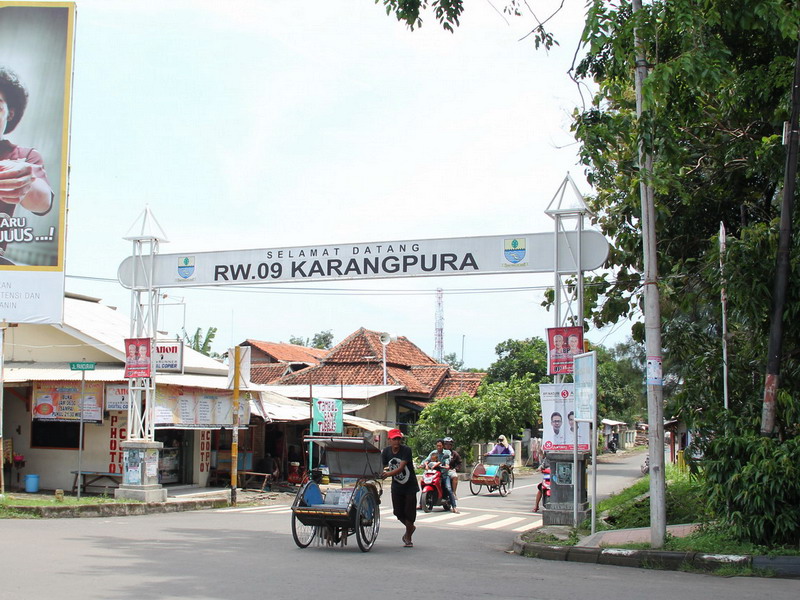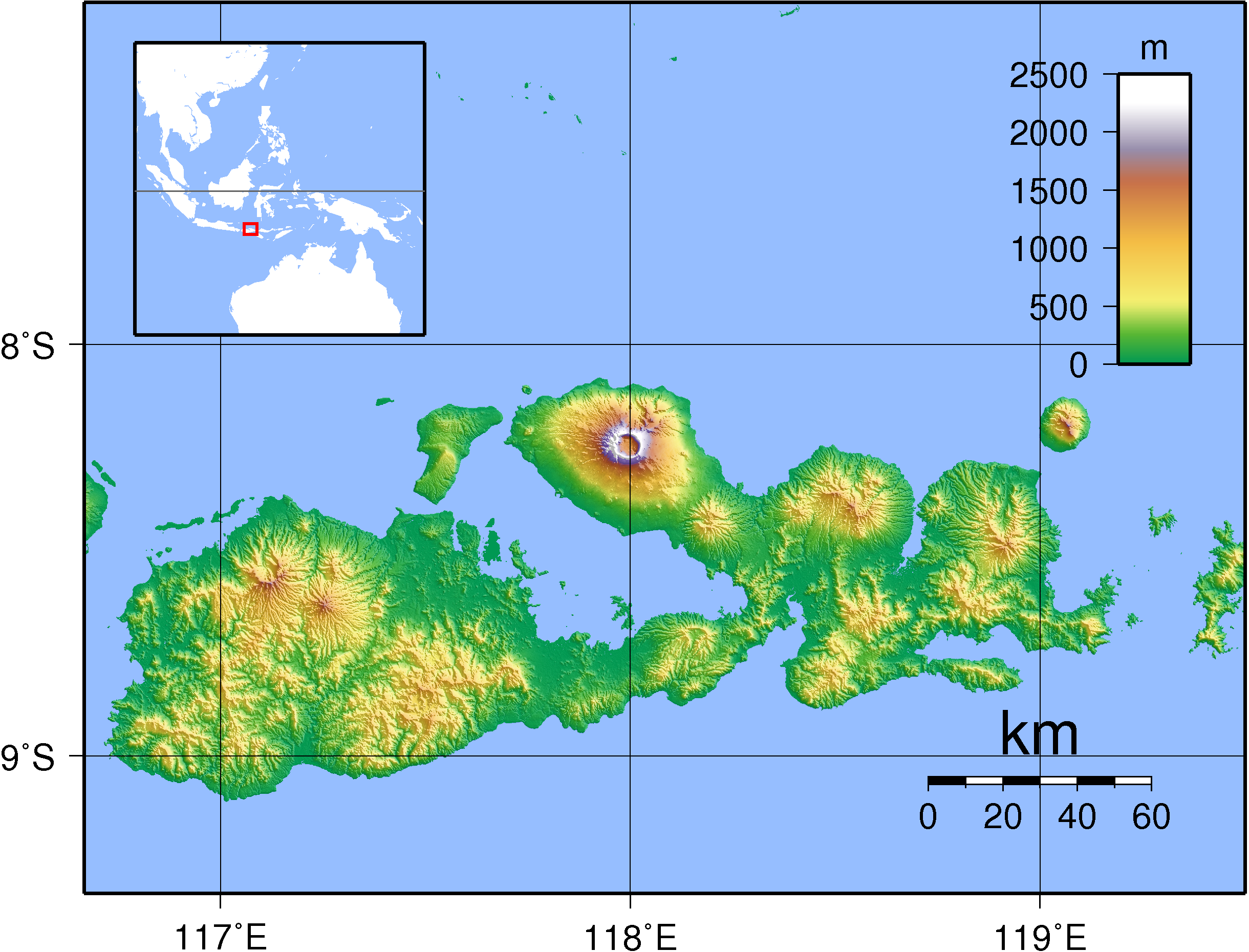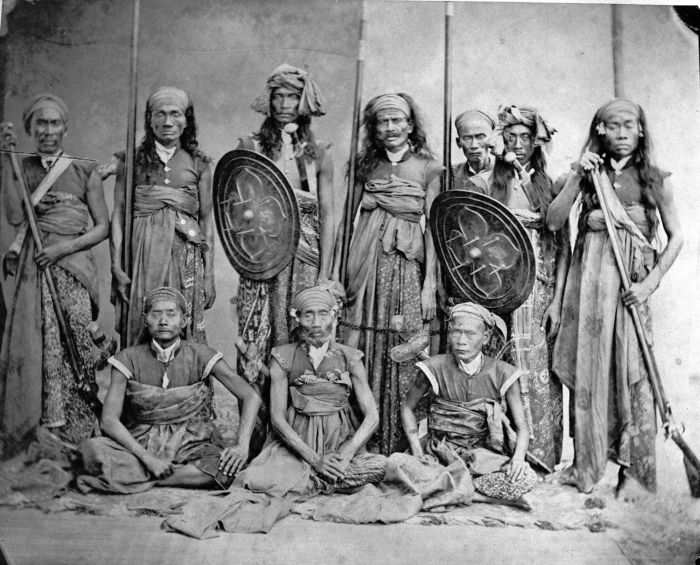|
Sumbawa People
Sumbawa or Samawa people are an ethnic group of people native to the western and central region of Sumbawa Island, which comprises West Sumbawa Regency and Sumbawa Regency. The Sumbawa people refer themselves as Tau Samawa people and their language is the Sumbawa language. Neither the Bimanese nor the Sumbawa people have alphabets of their own; they use the alphabets of the Bugis and the Malay language indifferently. The majority of the Sumbawa people practice Islam. The Sumbawa people once established their own government which became the Sumbawa Sultanate and lasted until 1931. History The Sumbawa people inhabit the western part of the Sumbawa Island and about another 38 smaller islands. In the eastern borders, the Sumbawa people are closely related to the Bima people. The Sumbawa people descended from the ancient Austronesian people that came to the island thousands of years ago. In the 14th century, the western part of the Sumbawa Island is regarded as a territory depen ... [...More Info...] [...Related Items...] OR: [Wikipedia] [Google] [Baidu] |
Malay Language
Malay (; ms, Bahasa Melayu, links=no, Jawi alphabet, Jawi: , Rejang script, Rencong: ) is an Austronesian languages, Austronesian language that is an official language of Brunei, Indonesia, Malaysia, and Singapore, and that is also spoken in East Timor and parts of the Philippines and Thailand. Altogether, it is spoken by 290 million people (around 260 million in Indonesia alone in its own literary standard named "Indonesian language, Indonesian") across Maritime Southeast Asia. As the or ("national language") of several states, Standard Malay has various official names. In Malaysia, it is designated as either ("Malaysian Malay") or also ("Malay language"). In Singapore and Brunei, it is called ("Malay language"). In Indonesia, an autonomous normative variety called ("Indonesian language") is designated the ("unifying language" or lingua franca). However, in areas of Central to Southern Sumatra, where vernacular varieties of Malay are indigenous, Indonesians refe ... [...More Info...] [...Related Items...] OR: [Wikipedia] [Google] [Baidu] |
Rukun Warga
A ''rukun warga'' (abbreviated RW, literally "pillar of residents") is an administrative division of Indonesia under the village or ''kelurahan'' (or under: ''dusun'' or village). , and the formation of local communities is through consultation in the framework of community service set by the village or villages. An RW is further divided into '' rukun tetangga'' (RT). Most information about governance and functioning of the RW and RT is in Indonesian. Some non-Indonesian anthropologists have written about the functions and issues of the RW. See also * Barangay * Tonarigumi The was the smallest unit of the national mobilization program established by the Japanese government in World War II. It consisted of units consisting of 10-15 households organized for fire fighting, civil defense and internal security. Histo ... Notes Subdivisions of Indonesia * Indonesia, Villages Law of Indonesia Society of Indonesia {{Indonesia-stub ... [...More Info...] [...Related Items...] OR: [Wikipedia] [Google] [Baidu] |
Slash-and-burn
Slash-and-burn agriculture is a farming method that involves the cutting and burning of plants in a forest or woodland to create a field called a swidden. The method begins by cutting down the trees and woody plants in an area. The downed vegetation, or "slash", is then left to dry, usually right before the rainiest part of the year. Then, the biomass is burned, resulting in a nutrient-rich layer of ash which makes the soil fertile, as well as temporarily eliminating weed and pest species. After about three to five years, the plot's productivity decreases due to depletion of nutrients along with weed and pest invasion, causing the farmers to abandon the field and move to a new area. The time it takes for a swidden to recover depends on the location and can be as little as five years to more than twenty years, after which the plot can be slashed and burned again, repeating the cycle. In Bangladesh and India, the practice is known as jhum or jhoom. Slash-and-burn is a type of shif ... [...More Info...] [...Related Items...] OR: [Wikipedia] [Google] [Baidu] |
Sunni
Sunni Islam () is the largest branch of Islam, followed by 85–90% of the world's Muslims. Its name comes from the word '' Sunnah'', referring to the tradition of Muhammad. The differences between Sunni and Shia Muslims arose from a disagreement over the succession to Muhammad and subsequently acquired broader political significance, as well as theological and juridical dimensions. According to Sunni traditions, Muhammad left no successor and the participants of the Saqifah event appointed Abu Bakr as the next-in-line (the first caliph). This contrasts with the Shia view, which holds that Muhammad appointed his son-in-law and cousin Ali ibn Abi Talib as his successor. The adherents of Sunni Islam are referred to in Arabic as ("the people of the Sunnah and the community") or for short. In English, its doctrines and practices are sometimes called ''Sunnism'', while adherents are known as Sunni Muslims, Sunnis, Sunnites and Ahlus Sunnah. Sunni Islam is sometimes referre ... [...More Info...] [...Related Items...] OR: [Wikipedia] [Google] [Baidu] |
Indonesia
Indonesia, officially the Republic of Indonesia, is a country in Southeast Asia and Oceania between the Indian and Pacific oceans. It consists of over 17,000 islands, including Sumatra, Java, Sulawesi, and parts of Borneo and New Guinea. Indonesia is the world's largest archipelagic state and the 14th-largest country by area, at . With over 275 million people, Indonesia is the world's fourth-most populous country and the most populous Muslim-majority country. Java, the world's most populous island, is home to more than half of the country's population. Indonesia is a presidential republic with an elected legislature. It has 38 provinces, of which nine have special status. The country's capital, Jakarta, is the world's second-most populous urban area. Indonesia shares land borders with Papua New Guinea, East Timor, and the eastern part of Malaysia, as well as maritime borders with Singapore, Vietnam, Thailand, the Philippines, Australia, Palau, and India ... [...More Info...] [...Related Items...] OR: [Wikipedia] [Google] [Baidu] |
Tambora Eruption
Mount Tambora is a volcano on the island of Sumbawa in present-day Indonesia, then part of the Dutch East Indies, and its 1815 eruption was the most powerful volcanic eruption in recorded human history. This volcanic explosivity index (VEI) 7 eruption ejected of material into the atmosphere, and was the most recent confirmed VEI-7 eruption. Although the Mount Tambora eruption reached a violent climax on 10 April 1815, increased steaming and small phreatic eruptions occurred during the next six months to three years. The ash from the eruption column dispersed around the world and lowered global temperatures in an event sometimes known as the Year Without a Summer in 1816. This brief period of significant climate change triggered extreme weather and harvest failures in many areas around the world. Several climate forcings coincided and interacted in a systematic manner that has not been observed after any other large volcanic eruption since the early Stone Age. Chronology of th ... [...More Info...] [...Related Items...] OR: [Wikipedia] [Google] [Baidu] |
Lombok Island
Lombok is an island in West Nusa Tenggara province, Indonesia. It forms part of the chain of the Lesser Sunda Islands, with the Lombok Strait separating it from Bali to the west and the Alas Strait between it and Sumbawa to the east. It is roughly circular, with a "tail" (Sekotong Peninsula) to the southwest, about across and a total area of about including smaller offshore islands. The provincial capital and largest city on the island is Mataram (city), Mataram. Orang Lombok is some what similar in size and density, and shares some cultural heritage with the neighboring island of Bali to the west. However, it is administratively part of West Nusa Tenggara, along with the larger and more sparsely populated island of Sumbawa to the east. Lombok is surrounded by a number of smaller islands locally called Gili Islands, Gili. The island was home to some 3,168,692 Indonesians as recorded in the decennial 2010 censusBiro Pusat Statistik, Jakarta, 2011. and 3,758,631 in the 2020 Cen ... [...More Info...] [...Related Items...] OR: [Wikipedia] [Google] [Baidu] |
Bali Kingdom
The Kingdomship of Bali was a series of Hindu-Buddhist kingdoms that once ruled some parts of the volcanic island of Bali, in Lesser Sunda Islands, Indonesia. With a history of native Balinese kingship spanning from the early 10th to early 20th centuries, Balinese kingdoms demonstrated sophisticated Balinese court culture where native elements of spirit and ancestral reverence combined with Hindu influences – adopted from India through ancient Java intermediary – flourished, enriched and shaped the Balinese culture. Because of its proximity and close cultural relations with the neighbouring Java island during the Indonesian Hindu-Buddhist period, the history of Bali Kingdom was often intertwined and heavily influenced by its Javanese counterparts, from Mataram c. 9th century to Majapahit empire in 13th to 15th centuries. The culture, language, arts and architecture of the island was influenced by Java. Javanese influences and presences grew even stronger prompted with th ... [...More Info...] [...Related Items...] OR: [Wikipedia] [Google] [Baidu] |
Majapahit
Majapahit ( jv, ꦩꦗꦥꦲꦶꦠ꧀; ), also known as Wilwatikta ( jv, ꦮꦶꦭ꧀ꦮꦠꦶꦏ꧀ꦠ; ), was a Javanese people, Javanese Hinduism, Hindu-Buddhism, Buddhist thalassocracy, thalassocratic empire in Southeast Asia that was based on the island of Java (in modern-day Indonesia). It existed from 1293 to circa 1527 and reached its peak of glory during the era of Hayam Wuruk, whose reign from 1350 to 1389 was marked by conquests that extended throughout Southeast Asia. His achievement is also credited to his prime minister, Gajah Mada. According to the () written in 1365, Majapahit was an empire of 98 tributaries, stretching from Sumatra to New Guinea; consisting of present-day Indonesia, Singapore, Malaysia, Brunei, southern Thailand, Timor Leste, southwestern Philippines (in particular the Sulu Archipelago) although the scope of Majapahit sphere of influence is still the subject of debate among historians. The nature of Majapahit relations and influences upon its ... [...More Info...] [...Related Items...] OR: [Wikipedia] [Google] [Baidu] |
Austronesian People
The Austronesian peoples, sometimes referred to as Austronesian-speaking peoples, are a large group of peoples in Taiwan, Maritime Southeast Asia, Micronesia, coastal New Guinea, Island Melanesia, Polynesia, and Madagascar that speak Austronesian languages. They also include indigenous ethnic minorities in Vietnam, Cambodia, Myanmar, Thailand, Hainan, the Comoros, and the Torres Strait Islands. The nations and territories predominantly populated by Austronesian-speaking peoples are sometimes known collectively as Austronesia. Based on the current scientific consensus, they originated from a Early human migrations, prehistoric seaborne migration, known as the Austronesian expansion, from pre-Han Chinese, Han Taiwan, at around 1500 to 1000 BCE. Austronesians reached the northernmost Philippines, specifically the Batanes, Batanes Islands, by around 2200 BCE. Austronesians used sails some time before 2000 BCE. In conjunction with their use of other maritime technologies (notably c ... [...More Info...] [...Related Items...] OR: [Wikipedia] [Google] [Baidu] |
Bugis Language
Buginese or Bugis (Buginese: ) is a language spoken by about five million people mainly in the southern part of Sulawesi, Indonesia. History The word Buginese derives from the word '' Bugis'' in Malay. In Buginese, it is called while the Bugis people are called . According to a Buginese myth, the term is derived from the name to the first king of Cina, an ancient Bugis kingdom, . basically means 'the followers of La Sattumpugi'. Little is known about the early history of this language due to the lack of written records. The earliest written record of this language is Sureq Galigo, the epic creation myth of the Bugis people. Another written source of Buginese is Lontara, a term which refers to the traditional script and historical record as well. The earliest historical record of Lontara dates to around the 17th century. Lontara records have been described by historians of Indonesia as "sober" and "factual" when compared to their counterparts from other regions of Mariti ... [...More Info...] [...Related Items...] OR: [Wikipedia] [Google] [Baidu] |







.jpg)